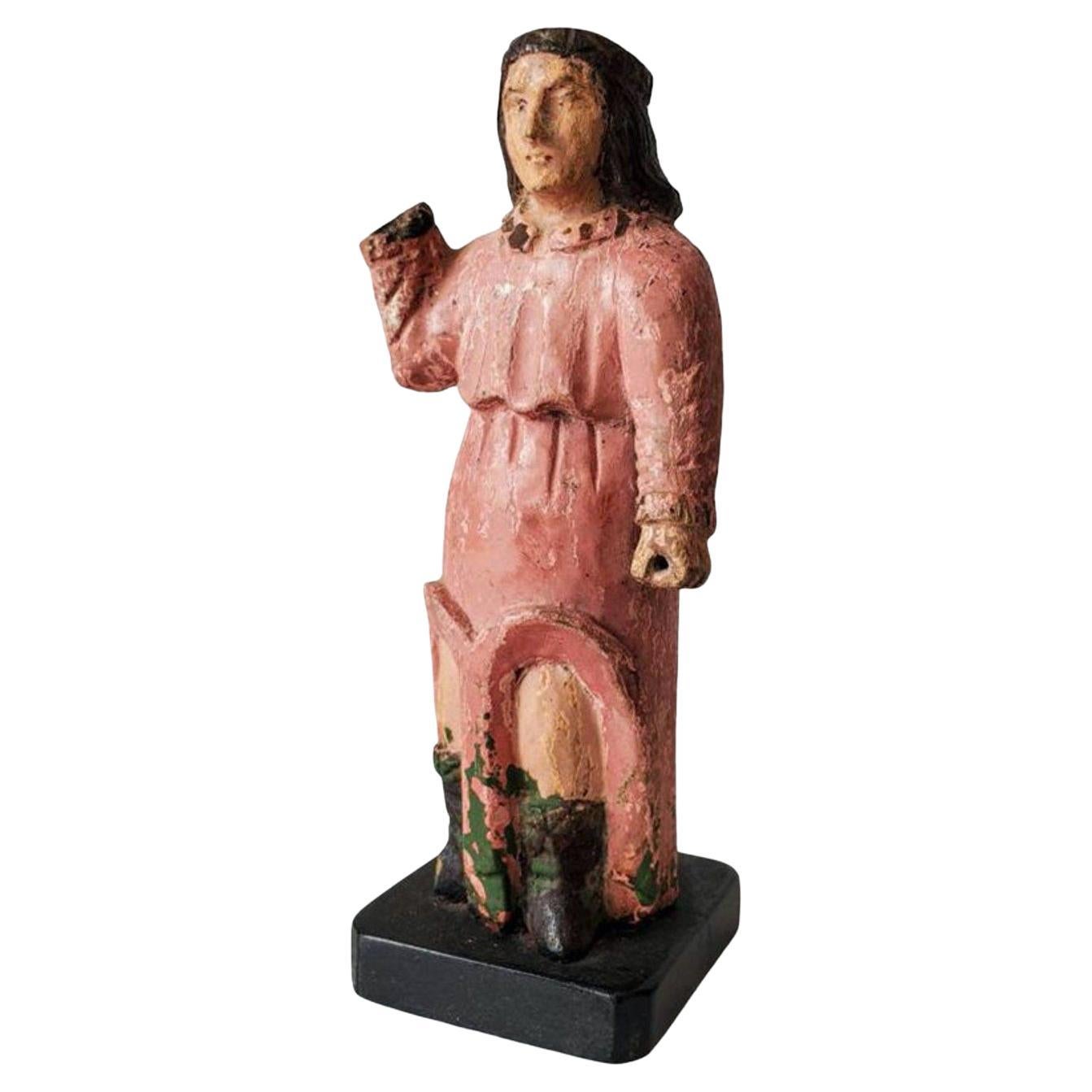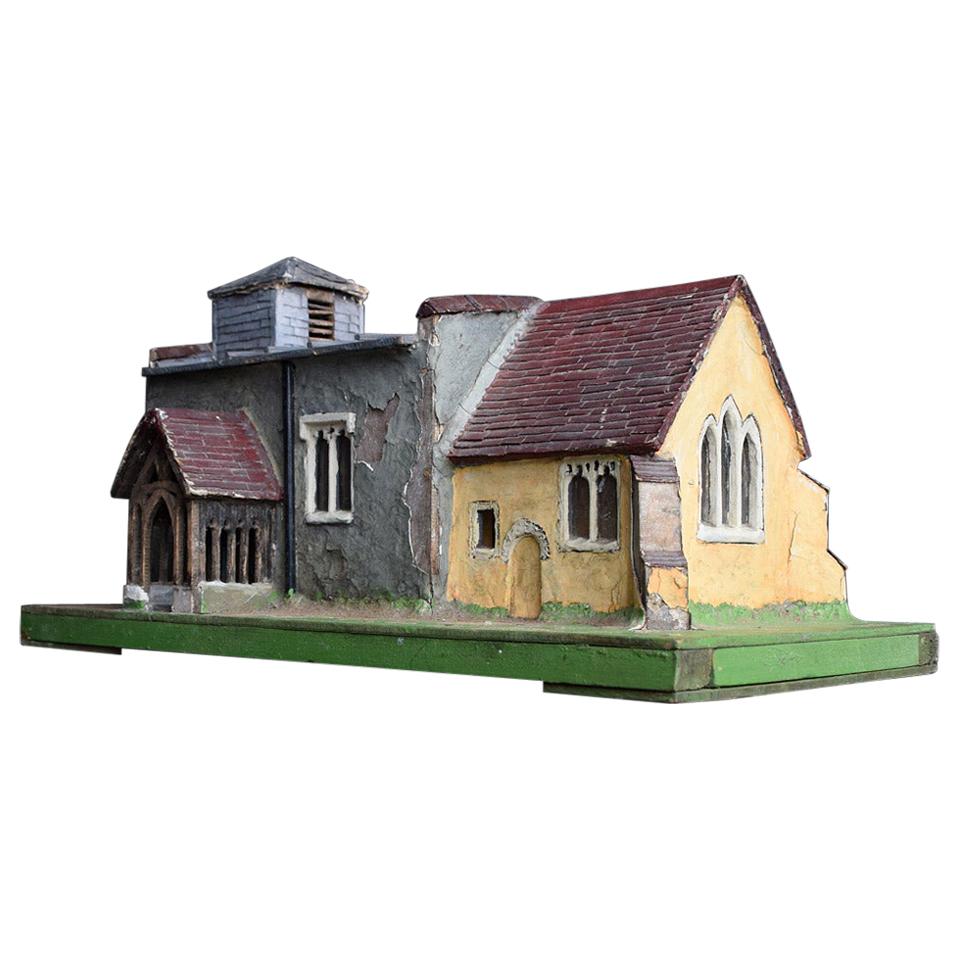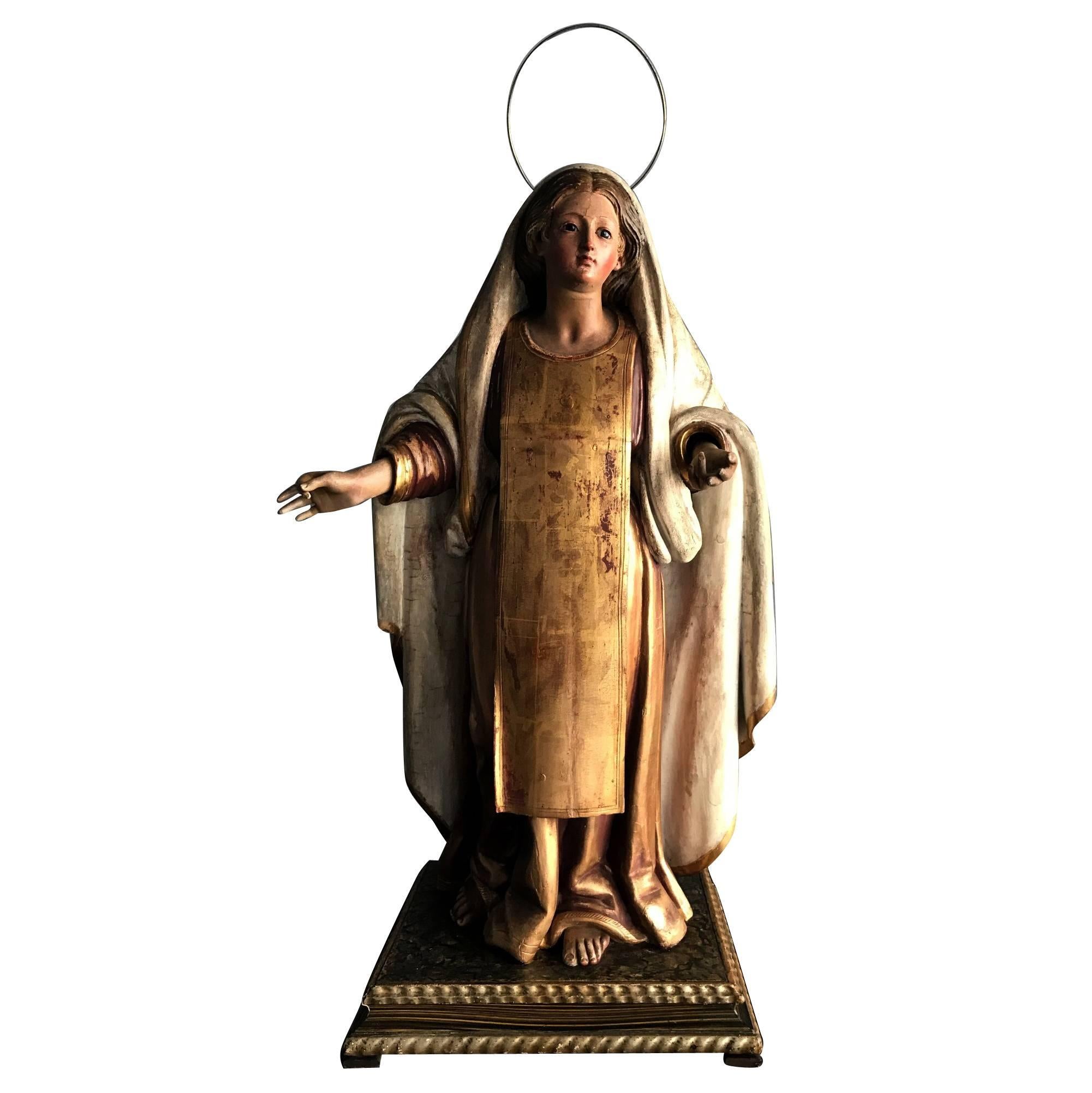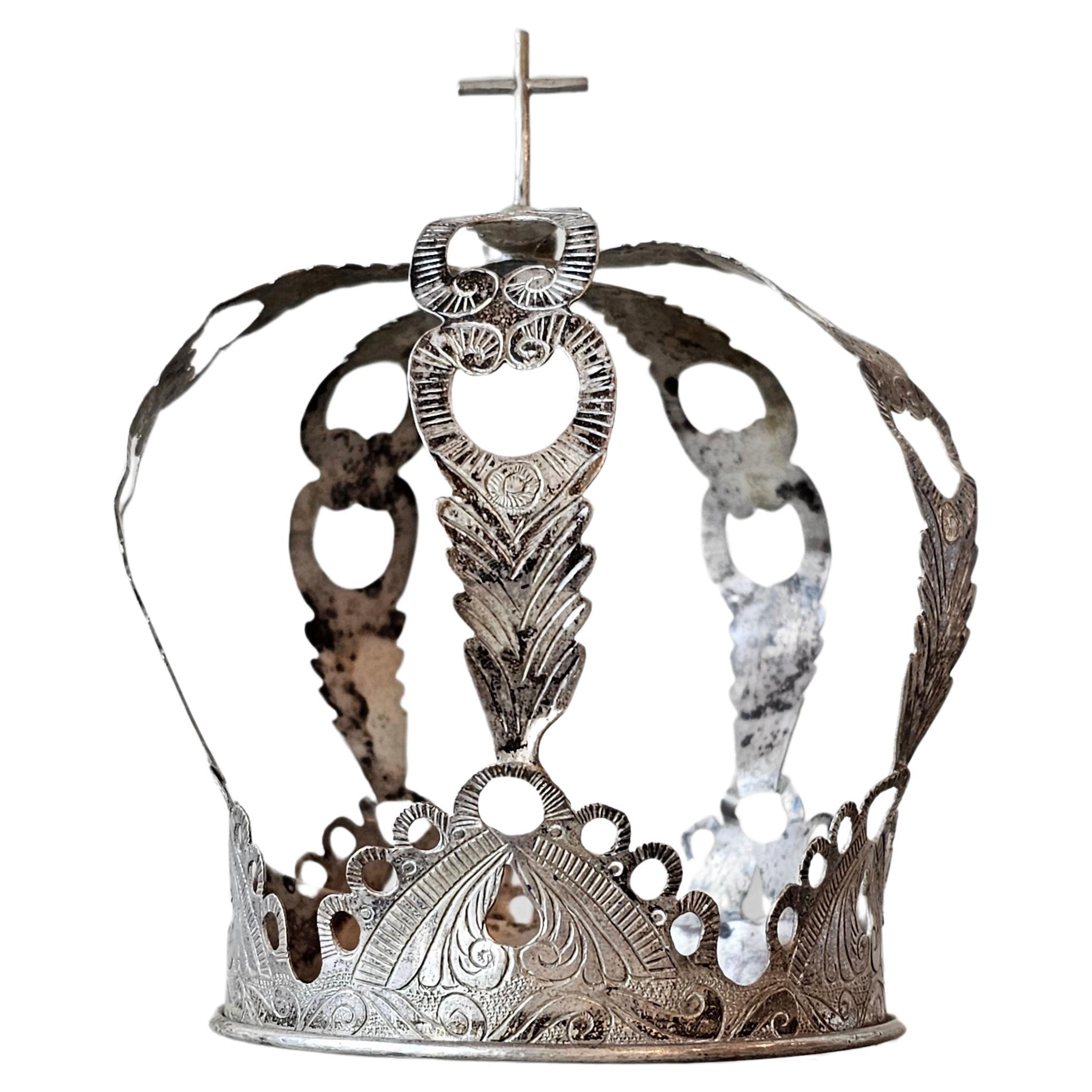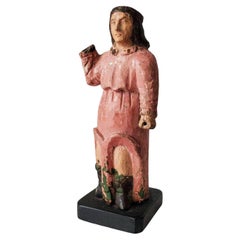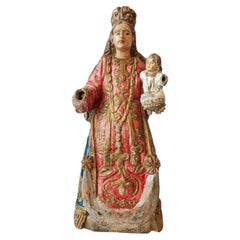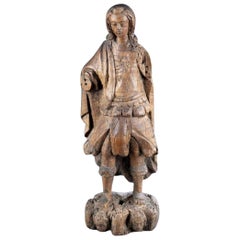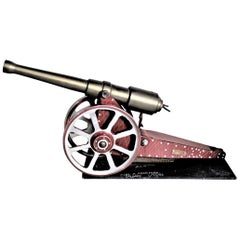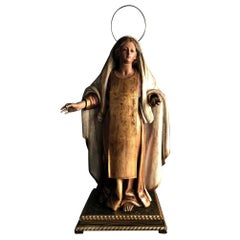
Rare Spanish Colonial Renaissance Chariot Carriage Model Folk Art Sculpture
View Similar Items
Want more images or videos?
Request additional images or videos from the seller
1 of 21
Rare Spanish Colonial Renaissance Chariot Carriage Model Folk Art Sculpture
About the Item
- Dimensions:Height: 8 in (20.32 cm)Width: 15 in (38.1 cm)Depth: 6 in (15.24 cm)
- Style:Spanish Colonial (Of the Period)
- Materials and Techniques:
- Place of Origin:
- Period:
- Date of Manufacture:circa 1800
- Condition:Wear consistent with age and use. Minor losses. Minor structural damages. Minor fading. Museum quality example, in overall good antique condition, especially considering its age and delicate nature of folk art. Wear consistent with age and indicative of use, including old touchups and losses throughout. Presents very well.
- Seller Location:Forney, TX
- Reference Number:1stDibs: LU5977227426622
About the Seller
4.8
Platinum Seller
These expertly vetted sellers are 1stDibs' most experienced sellers and are rated highest by our customers.
Established in 2013
1stDibs seller since 2021
200 sales on 1stDibs
More From This SellerView All
- 19th Century Spanish Colonial Religious Folk Art Santo Altar FigureLocated in Forney, TXAn antique Spanish Colonial period hand carved and painted santo church altar figure. Born in Mexico in the first half of the 19th century, the religious...Category
Antique 19th Century Mexican Folk Art Religious Items
MaterialsWood, Paint
- Antique Spanish Colonial Silver Santo CrownLocated in Forney, TXA scarce 19th century Spanish Colonial style silver saint's crown, to be mounted on the head of a church altar figure, having a cross finial, pierced arches with foliate motif and fi...Category
Antique 19th Century Spanish Colonial Religious Items
MaterialsSilver
- Antique Spanish Colonial Santo Religious Altar FigureLocated in Forney, TXAn exceptional example of Spanish Colonial style, born in Mexico in the 19th century, this large hand carved and painted santo religious folk art altar f...Category
Antique 19th Century Mexican Spanish Colonial Religious Items
MaterialsGlass, Art Glass, Wood, Paint
- 17th Century Spanish Colonial Hispano-Philippine Carved SantoLocated in Forney, TXA scarce 17th century Spanish Colonial carved wood santo with provenance from the National Museum of the Philippines Manila. circa late 1600s A large part of what makes this example so very rare is not just the age and condition, but the saint depicted, San Roque. The Hispano-Philippine (Spanish-Filipinos) hand carved hard wood religious altar figure presents splendidly, with scattered remnants of original gesso and polychrome pigments, the exceptionally sculpted religious folk art depicting San Roque (Saint Roch or Rocco), the 14th century Catholic patron saint frequently invoked against the plaque, various infectious disease, as well as patron saint of dogs, invalids, of falsely accused people, and of bachelors, amongst others. Provenance / Acquisition: Retaining registration - identification label to verso from The Republic of the Philippines (RP) National Museum of the Philippines Manila with hand written registration number. Acquired from highly reputable auction house, Austin Auction Gallery, est. 1982, Austin, Texas. February 2022 catalog. Dimensions: (approx) Overall: 15.75" High, 5" Wide, 4" Deep. Figure: 14" High 1.5lbs Great original antique condition, especially considering it's around 350 years old. Nicely aged patina over the whole. Presented on a later wood plinth base. Typical loss to right arm, minor finish losses, old tiny metal plate added to prevent age related splitting, all wear consistent with age, and only adds to the overall sophisticated character, authenticity, and charming rustic warmth that can only be acquired over long periods of time. We here at Lynx Hollow Antiques absolutely love religious antiques, from an antique altar, church architectural salvaged building and ornamental elements, reliquary, tabernacle cabinet...Category
Antique 17th Century Spanish Colonial Religious Items
MaterialsGesso, Hardwood
- 19th Century Spanish Colonial Our Lady of Guadalupe RetabloLocated in Forney, TXA stunning and rare Spanish Colonial Our Lady of Guadalupe retablo painting with beautiful patina, displayed in an altarpiece shrine. Handcrafted...Category
Antique 19th Century North American Spanish Colonial Religious Items
MaterialsTin
- Antique Spanish Colonial Baptismal Font Vessel and Altar Garniture PairLocated in Forney, TXSpanish Colonial set of three Mexican religious folk art pieces. Ornate, highly decorative, silver tone with gilt accents, including two church altar ...Category
Antique 19th Century Spanish Colonial Religious Items
MaterialsSilver
You May Also Like
- Antique Spanish-Colonial SantoLocated in Atlanta, GAAn very well weathered Spanish-colonial Santo, likely depicting St Michael or St Miguel. Carved from the wood, the statue displays historical loss on both limbs and also the wings on...Category
Antique Late 18th Century Mexican Spanish Colonial Figurative Sculptures
MaterialsWood
- Vintage Unique Folk Art Made Metal and Cold-Painted Colonial Canon ModelLocated in Hamilton, OntarioThis Folk Art constructed model canon was made in Canada by a retired millwright in 1984 in the British Colonial style. This model canon loosely resembles...Category
Late 20th Century Canadian British Colonial Models and Miniatures
MaterialsAluminum, Brass
- Antique Spanish Colonial Statue Santo MadonnaLocated in Atlanta, GAA most spectacular antique Spanish Colonial figure of Madonna, Mexico circa 19th century possibly earlier. Constructed in plaster with carved and gilt wood accent. Realistic in style...Category
Antique 19th Century Mexican Spanish Colonial Figurative Sculptures
MaterialsMetal
- English Folk Art Church ModelLocated in London, GBFolk Art Church Model We are proud to offer a wonderful example of a mid-20th Century folk-art church model. Built from scratch using various material...Category
Vintage 1940s British Folk Art Sculptures and Carvings
MaterialsWood
- Rare Aztec Colonial Polychromed Wood Sculpture! Holy Imagene Bultos Santos IconsLocated in Peoria, AZMUSEUM PERFECTION ! AZTEC INFLUENCED LATIN AMERICAN COLONIAL ART AMAZINGLY RARE PIECE ! Approx. 14" x 8" x 2 1/2" After Hernán Cortés conquered the Aztec empire, painting and sculpture schools were set up within missions to produce art for Roman Catholic worship in Spanish America to promote Christian evangelization. The works that emerge from this period are great historic treasures and tell us much about this time in history. Icons were important in this conversion process. Here is an Imagene that was likely employed in a church from the 17th century. It features 5 elaborately carved faces and figures depicting angels and saints. This piece is magnificent for many reasons, but the most important reason is that this piece illustrates the bridge between the Spanish and Aztec art schools. The Aztecs had developed the most splendid feather art in the world. Feather mosaics (arte plumario in Spanish, amantecayotl in Nahuatl), were created by specially trained and talented Aztec nobles. The blue green iridescent color of hummingbird feathers had made them a regular form of tribute to Aztec rulers and art that featured these feathers were incomparable. The Spanish art instructors adopted feathers into traditional Catholic imagery and this piece shows the result of such hybrid. Here feathers are prominently sculpted into the background and were polychromed with sensational hues to reflect the native love and cultural appreciation for feather art. Few feather mosaics survive because of their temporal frailty, but the wood worked feathers in this piece give scholars and collectors a lasting indication of how Aztecs stylistically used the feathers in their pieces. Aztec religious leaders wore headdresses and garments made of feathers - and here these saints appear to be wearing feather headdresses! Even after centuries, the colors of this piece are incredibly compelling. Fragments of the rich blue green pigment that was applied to mimic the hummingbird feathers are still present. The golds, yellows and browns display spectacular understanding of complementary colors. What's more this piece also shows Aztec sun imagery incorporated into the design! On the reverse side of the Saints' faces we see a vivid blue sun burst type design which clearly was an Aztec motif of the period and has no comparable counterpart in Catholic holy treasures...Category
Antique 17th Century Mexican Spanish Colonial Historical Memorabilia
MaterialsWood
- Spanish Colonial Carved Wood and Iron StirrupsLocated in Stamford, CTFantastic pair of 18th-19th century South American carved wooden stirrups. Known as estribos, each are carved from a solid block of wood. Decorated with wonderful carvings of horse heads and grape vines, these are truly charming pieces of Folk Art. With wrought iron stirrup rings and the original leather straps. Rich chocolate patina that only comes from age and use. Worn by Chilean huasos, highly skilled horsemen akin to America's cowboys. Prized by collectors of horse memorabilia...Category
Antique Early 19th Century Chilean Spanish Colonial Sculptures and Carvings
MaterialsWood
Recently Viewed
View AllMore Ways To Browse
Antique Original Antique Furniture
Original Antique Furniture
Antique Furniture Lighting
Antiques From Spain
Antique Vintage Rare
Rare Antique Vintage
Theatre Furniture
Texas Furniture
Texan Furniture
Texas Used Furniture
Used Furniture In Texas
Rare Old Antique Items
Spanish Renaissance
Antique Theater
Spanish Foot
Spanish Renaissance Furniture
Texas Antique
Texas Antique Furniture
